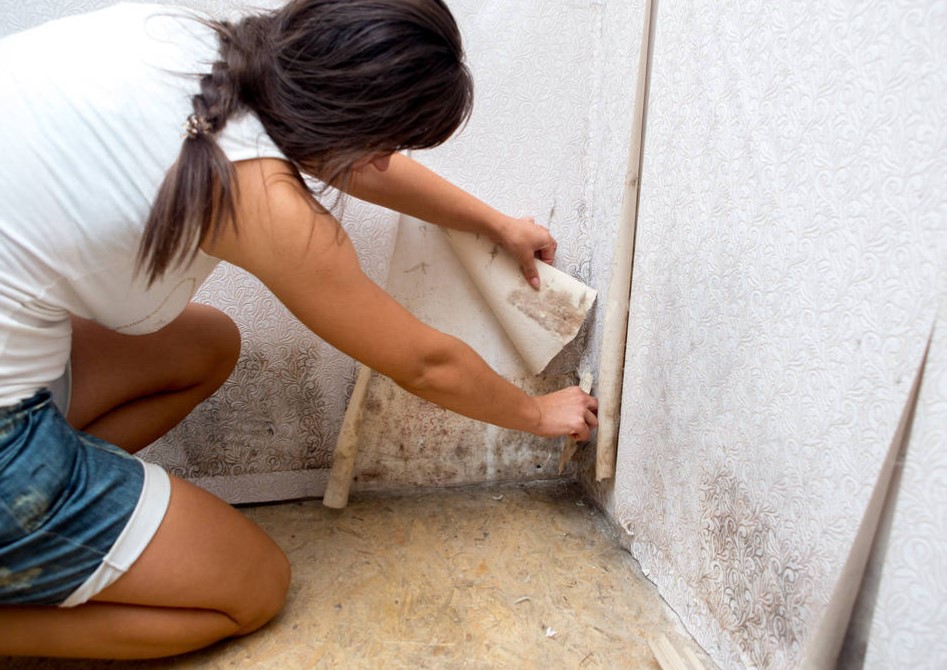Mould on walls is a common, frustrating, and potentially hazardous issue that many homeowners face. While it may seem daunting at first, the truth is that understanding how to mould removal Gold Coast from walls is within everyone’s grasp. By following proper guidelines and employing effective strategies, you can transform your living space into a mould-free environment.
Key Takeaways:
- Mould is not only unsightly but can also be harmful to health, so understanding its nature is crucial for effective removal.
- Identifying the type of mould is an essential first step, followed by preparing the affected area to prevent spreading.
- Both natural solutions like vinegar and chemical solutions like bleach can be used to remove mould, depending on its type and extent.
- Specialised equipment like steam cleaners may be necessary for certain mould removal cases.
- Safety precautions, including wearing personal protective equipment and proper disposal of mould materials, must always be followed.
- To prevent mould from returning, it’s essential to maintain proper ventilation, control humidity, and conduct regular cleaning.
- Professional help may be required for extensive mould problems, and selecting the right service is key.
- Avoiding common mistakes such as overlooking the moisture source and misusing chemicals is important for successful mould removal.
- Awareness of the potential health risks associated with mould, particularly for those with allergies or respiratory conditions, is essential.
- The cost of mould removal varies, depending on whether you use DIY solutions or hire professionals.
- The article provides answers to several common questions about mould on walls, offering specific solutions and guidance.
- Mould removal from walls is an achievable task with the right knowledge and approach, and this comprehensive guide aims to equip homeowners with the tools they need for success.

What is Mould?
Mould is a type of fungus that thrives in damp, dark conditions. Comprising tiny spores, mould can grow on various surfaces, including walls. Understanding what mould is, helps to tackle its removal more effectively.
How Do I Remove Mould from Walls?
Identifying the Type of Mould
Determining the type of mould you’re dealing with is crucial for effective removal. Common types include black mould, green mould, and white mould. Each may require different treatment approaches.
Preparing Your Space
Before attempting to remove mould, protect the surrounding area by covering furniture with plastic sheeting. Seal vents to prevent mould spores from spreading.
Using Natural Solutions
For a more eco-friendly approach, try using natural solutions like vinegar, baking soda, or tea tree oil. Mix one part vinegar with one part water and spray on the affected area. Let it sit for an hour before scrubbing.
Chemical-based Solutions
For more stubborn mould, chemical-based solutions like bleach or specialized mould removers might be necessary. Follow the manufacturer’s instructions for the best results.
Specialised Equipment for Mould Removal
In some cases, specialised equipment like a steam cleaner might be needed. These tools can be rented from home improvement stores.
Safety Precautions
Personal Protective Equipment
Always wear proper protective equipment such as masks, gloves, and goggles to avoid exposure to mould and cleaning chemicals.
Handling and Disposal of Mould Materials
Dispose of any mouldy materials in sealed plastic bags and follow local disposal guidelines.
Preventing Mould Growth
Proper Ventilation
Ensuring proper ventilation in your home can prevent mould from returning. Use exhaust fans in bathrooms and kitchens to minimize moisture buildup.
Controlling Humidity
Keep indoor humidity levels below 60% by using dehumidifiers and air conditioners.
Professional Mould Removal Services
When to Seek Professional Help
If mould infestation is extensive or if you have health concerns, seeking professional help is advisable.
Selecting the Right Professional Service
Look for certified and experienced professionals. Check reviews, ask for references, and compare quotes to find the right service.
Common Mistakes and How to Avoid Them
Overlooking the Source of Mould
Identifying and addressing the source of moisture is key to preventing recurrence.
Misusing Chemicals
Follow the instructions for any chemical products carefully to avoid ineffective treatment or potential health risks.
Skipping Safety Precautions
Never underestimate the importance of safety precautions. Always follow guidelines for personal protection and proper disposal.
Conclusion
Understanding how to remove mould from walls is an essential skill for maintaining a healthy and attractive home environment. By following the guidelines and precautions outlined in this article, you can successfully tackle mould issues and enjoy a cleaner, safer living space.
Frequently Asked Questions
How do I prevent mould from coming back?
Regular maintenance, proper ventilation, and controlling humidity can prevent mould from returning.
What are the health risks associated with mould?
Exposure to mould can lead to respiratory issues, skin irritations, and other health concerns.
Can I remove mould myself, or should I hire professionals?
For minor infestations, DIY methods can be effective. For more extensive mould problems or health concerns, hiring professionals is advisable.
Is mould removal expensive?
The cost varies depending on the extent of the problem and the methods used. DIY solutions can be affordable, while professional services may be more costly.
What are the signs of mould in walls?
Signs of mould include visible growth, musty odours, discolouration, and increased allergy symptoms.
Can vinegar kill mould?
Yes, vinegar is an effective natural solution for killing many types of mould.